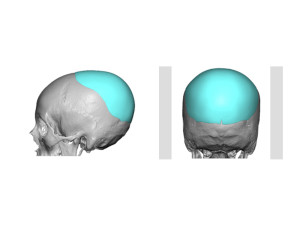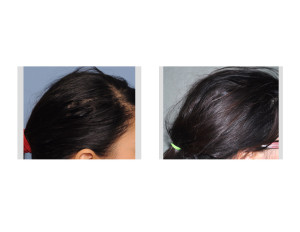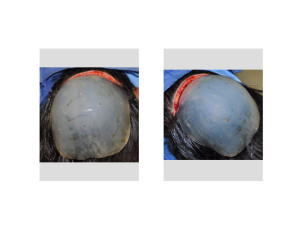
Augmentation of the skull in the flat area (occipital augmentation) can correct the aesthetic skull deformity. This can be using a variety of materials and the decisions are about what material and the incision needed to place it. Historically bone cements (e.g., PMMA) were the common method of occipital augmentation placed through a fairly long scalp incision. A more contemporary method is the fabrication of a custom implant made of silicone material that is designed from the patient’s 3D CT scan.
The use of a custom occipital implant requires a design that can adequately correct the skull deformity but not be too big that the overlying scalp can not accommodate it. There is no exact science as to how much occipital skull augmentation any patient can take but my experience indicates that 12mm to 15mm at the height of augmentation would be the maximum. This would require a longer scalp incision to be placed. If done through more distant and limited incisions the maximum thickness of the implant should be closer to 10mm to 12mms.


The custom occipital implant is a very effective method for creating a permanent internal ‘bump it’ effect. The custom design must balance the thickness and dimensions of the implant versus how much the scalp can stretch to accommodate it. There is also the issue of the location and length of the incision to place it. If the implant is not too big it can be placed with relative ease through a low hairline occipital incision.
Highlights:
1) Inadequate fullness or flatness of the back of the head is a common aesthetic skull concern amongst women.
2) Occipital augmentation can create the ‘bump it’ effect that some women want to create more fullness at the top of the occipital bone. (vertex)
3) A custom occipital implant is the most effective method for creating increased skull fullness at the back of the head.
Dr. Barry Eppley
Indianapolis, Indiana



